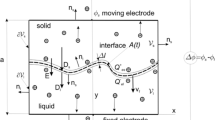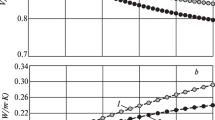Abstract
IT is usually supposed that the conductivity of dielectric materials increases continuously with increase in temperature. The only recorded exception to this normal behaviour appears to be by Gemant1, who found that the D.C. conductivity of a heavy cable oil decreased temporarily from –40° to –20° C. I have recently observed a similar peculiar phenomenon, together with a hysteresis effect, in D.C.conductivity measurements over the temperature range from 0° to 50° C. on a sample of paraffin wax (melting between 45° and 55° C.). The results of a cycle of measurements under a continuously applied voltage gradient of 500 volts per cm. are shown in Fig. 1. Commencing at the point A, the temperature was lowered to B, then raised at a rate of about 1° C. in 5 minutes along the curve BCD, and finally decreased at the same rate along DEB´. On regaining room temperature very slowly from B´, the conductivity had risen to F, and with temperature rise from this point followed the curve FGD. On subsequent slow cooling to room temperature, the conductivity attained the value H.
Similar content being viewed by others
References
A. Gemant, Z. Phys., 75, 613; 1932.
Author information
Authors and Affiliations
Rights and permissions
About this article
Cite this article
JACKSON, W. Conductivity-Temperature Curves of Paraffin Wax. Nature 133, 647–648 (1934). https://doi.org/10.1038/133647a0
Issue Date:
DOI: https://doi.org/10.1038/133647a0
- Springer Nature Limited
This article is cited by
-
Studies in electrets—Part I
Proceedings of the Indian Academy of Sciences - Section A (1952)
-
Conductivity of Oils and Waxes
Nature (1935)





